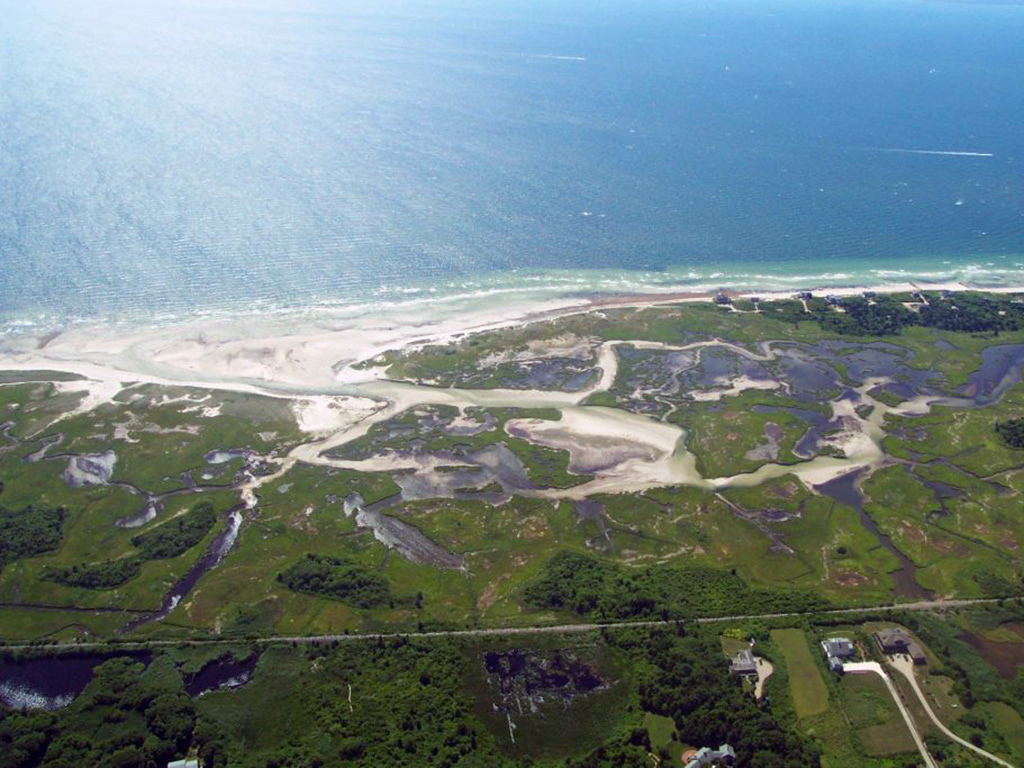搜索结果: 1-9 共查到“海洋科学 capacity”相关记录9条 . 查询时间(0.078 秒)

Salt marshes' capacity to store carbon may be threatened by nitrogen pollution(图)
Salt marshes capacity carbon nitrogen pollution
2019/10/18
Deep in the waterlogged peat of salt marshes, carbon is stored at much greater rates than in land ecosystems, serving as an offset to climate change caused by carbon dioxide (CO2) build-up in the atmo...
Euphotic Holding Capacity for Optically Active Substances
Euphotic layer optically active substances light attenuation
2009/6/10
Euphotic holding capacity is defined as the amount of pure water or a substance that could be
contained in the euphotic layer if it would be the single optically active component in the system. Compa...
Capacity of surface warship’s protective bulkhead subjected to blast loading
protective bulkhead blast loading energy method
2011/9/9
The protective bulkhead of the large surface warship need to be designed working in the membrane mode. In this paper, a formula is derived for calculating the plastic deformation of the protective bul...
The cyanate utilization capacity of marine unicellular Cyanobacteria
The cyanate utilization capacity marine unicellular Cyanobacteria
2014/4/21
Cyanate, a by-product of urea decomposition, is a potential nitrogen (N) source in marine environments, but to date it has received scant attention. Cyanobacteria presumably acquire this compound via ...
The cyanate utilization capacity of marine unicellular Cyanobacteria
cyanate utilization capacity marine unicellular Cyanobacteria
2014/4/18
Cyanate, a by-product of urea decomposition, is a potential nitrogen (N) source in marine environments, but to date it has received scant attention. Cyanobacteria presumably acquire this compound via ...
Valuable mineral resources are widely distributed throughout the seabed. autonomous underwater vehicles (AUVs) are preferable to remotely-operated vehicles (ROVs) when probing for such mineral resources as the extensive exploration area makes it difficult to maintain contact with operators. AUVs depend on batteries, so their power consumption should be reduced to extend exploration time. Power for conventional marine instrument systems is incorporated in their waterproof sealing. External intermittent control of this power source until termination of exploration is challenging due to limitations imposed by the underwater environment. Thus, the AUV must have a power control system that can improve performance and maximize use of battery capacity. The authors developed such a power control system with a three-step algorithm. It automatically detects underwater operational states and can limit power, effectively decreasing power consumption by about 15%.
surface piercing propeller boundary element method hydrodynamic characteristics
2011/9/13
Demand for high-speed marine vehicles (HSMVs) is high among both commercial and naval users. It is the duty of the marine vessel’s designer to provide a hull and propulsion system that diminishes drag...
Photoprotection capacity differs among diatoms: Possible consequences on the spatial distribution of diatoms related to fluctuations in the underwater light climate
Photoprotection capacity among diatoms spatial distribution diatoms related to fluctuations underwater light climate
2014/4/22
In this study, we show a fundamental difference between diatom species from different marine habitats in their ability to cope with changes in irradiance. Estuarine species show a higher and more flex...
Chironomids (Diptera) and oxy-regulatory capacity: An experimental approach to paleolimnological interpretation
Chironomids (Diptera) oxy-regulatory capacity
2014/5/19
We measured the ability to regulate oxygen uptake of 16 chironomid taxa from lakes in low-arctic West Greenland
by means of oxygen microelectrodes in custom-made respiration chambers. The respiration...
Hyperspectral analysis of chlorophyll content and photosynthetic capacity of coral reef substrates
Hyperspectral analysis chlorophyll content photosynthetic capacity coral reef substrates
2014/5/19
Few studies have assessed the biophysical properties controlling reflection and absorption of light in coral reef environments and their relationships with quantitative measures of reef health and pro...

